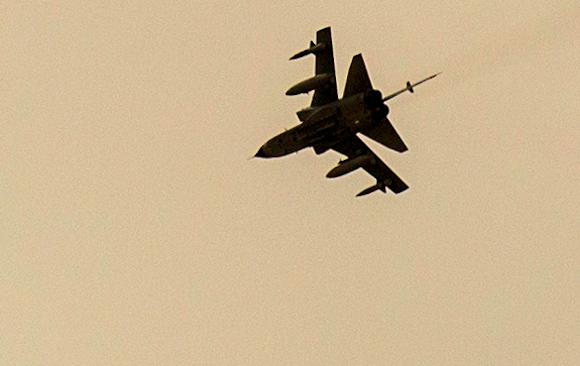When Italian politicians talk about the phenomenon of uncontrolled migratory flows coming from the coasts of Libya, they often refer, as a multiplier event of this phenomenon, to the fall of the regime of Colonel Gaddafi, in the 2011, caused by the military intervention of France, with the support of London and the Obama administration, following the UN resolution no. 1973.
But what was the contribution of our country, and especially of the Italian Air Force and the Navy, in the ODYSSEY DAWN and UNIFIED PROTECTOR operations, in the months between March and May of the 2011?
First of all the not negligible concession of airport installations to the Allies - five in all - as starting points for the attacks. More specifically, the aircraft used by our Air Force and Navy Aviation were 12 TORNADO in the IDS and ECR version, eight AV-8B HARRIER II and a variable number of TYPHOON and F-16ADF fighters, initially those of the 37 STORMO were used and then those of the 4 ° and the 36 ° (the Air Force aircraft were deployed in Trapani while the HARRIER were boarded on the GARIBALDI).

On the day of 22 March two attack groups took off from Trapani, both of the same composition: two TORNADO ECR for the suppression of the radar systems, two F-16 escort, a TORNADO IDS used for refueling in flight. Until the end of March, the Air Force operations had no substantial changes, except for the use, for the refueling of the KC-130Js as well as the first integration, and then the replacement of the F-16 with the HARRIER of the Navy and the TYPHOON of the 4 ° Stormo of Grosseto.
On the first of April twelve missions are carried out, led by mixed groups of TORNADO ECR, IDS, HARRIER and TYPHOON. With tasks that ranged from air defense, surveillance, to ground attack, in the latter case were used laser-guided bombs GBU-16 and GBU-24, JDAM but also the cruise missiles STORM SHADOW ( two of these weapons were used to destroy a command post for Sudanese mercenaries in the pay of the government, located in a location far from the Libyan coast). The operational debut of the IRIS-T infrared short-range air-to-air missile, embarked on THYPOON and TORNADO, is worth mentioning.
The sortie of Italian aircraft continued until the May 20, even if there were no official announcements about the actual number of attacks conducted (from the 23 April the communiqués of the National Commands began to be diffused in a generic way), unlike the other countries involved in the anti-Gaddafi coalition.
However, there is no doubt that the contribution of the Italian air forces has had a significant impact, especially from a qualitative point of view, in the war against the regime of the colonel.
Photo: US Marine Corps / NATO












